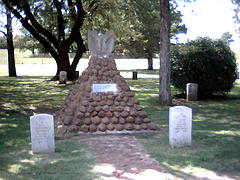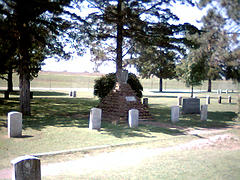Geronimo Grave Marker
Location
Directions
Old Fort Sill, North of Lawton, Oklahoma: From I-44 in Lawton, Take Exit 41 on to Sheridan Road, Turn Right on Randolph Road (Follow signs) to Quinette Road right turn pass the Patriot Club and the Golf Course pass under I-44 and follow signs to the Apache Cemetery. Cemetery is on right side of Road.
Regions
Maps
- 34.696463, -98.370759
- OpenStreetMap
- Google Maps
- Bing Maps
- Apple Maps
- MapQuest
Pictures
Notes
Geronimo
From Wikipedia, the free encyclopedia.
From Wikipedia, the free encyclopedia.
Geronimo (Chiricahua Goyaalé 'One Who Yawns'; often spelled Goyathlay in English), (June 16, 1829–February 17, 1909) was a prominent Native American leader of the Chiricahua Apache who long warred against the encroachment of the United States on tribal lands.
Geronimo was born on Turkey Creek in what is now the state of Arizona, then part of Mexico, but which his family considered Bedonkohe Apache land. Geronimo himself was a Bedonkohe Apache. He grew up to be a respected medicine man and, later, an accomplished warrior who fought frequently with Mexican troops. Mexican soldiers massacred his first wife and three children during a supposedly peaceful trading session 1858, and as a result he hated all Mexicans for the rest of his life. His Mexican adversaries gave him the nickname of "Geronimo", the Spanish version of the name "Jerome". The reasons for this name are not known. Some believe it was a transcription of the Spanish attempt to pronounce the name Goyathlay. Others believe that his Spanish enemies called out to St. Jerome for assistance while attacking or in the midst of violent defeat.
Geronimo, in tandem with his chief, Naiche, the son of Cochise, fought against ever increasing numbers of both Mexican and United States troops and became famous for his daring exploits and numerous escapes from capture. At the last, these 38 men, women and children evaded 5000 US troops (one fourth of the army) and the Mexican army for a year. His forces became the last major force of independent Indian warriors who refused to acknowledge the United States Government in the American West. This came to an end on September 4, 1886, when Geronimo surrendered to United States Army General Nelson A. Miles at Skeleton Canyon, Arizona.
Geronimo was sent in as a prisoner to Fort Pickens, Florida. In 1894 he was moved to Fort Sill, Oklahoma. In his old age Geronimo became something of a celebrity. He appeared at fairs, including the 1904 World's Fair in St. Louis, and selling souvenirs and photographs of himself. However, he was not allowed to return to the land of his birth. He rode in President Theodore Roosevelt's 1905 inaugural parade. He died of pneumonia at Fort Sill.
More...
* The Wikipedia article is available under the terms of the GNU Free Documentation License.


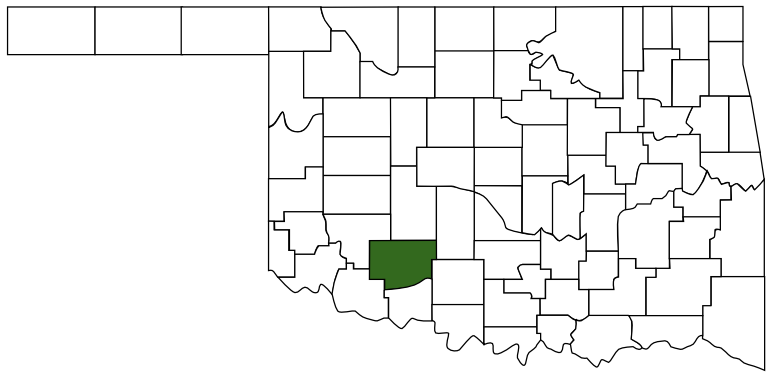 Comanche County
Comanche County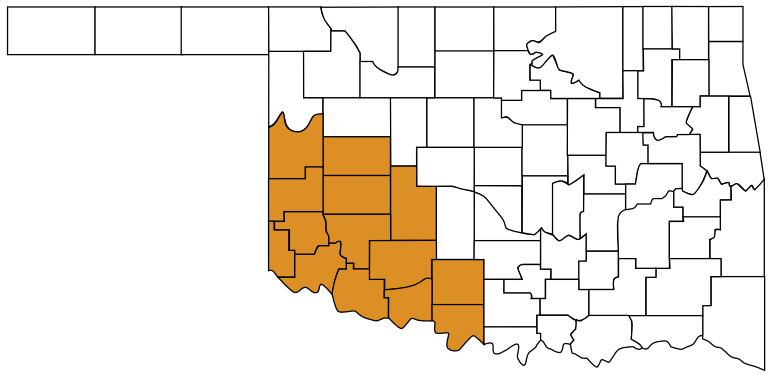 Great Plains Country
Great Plains Country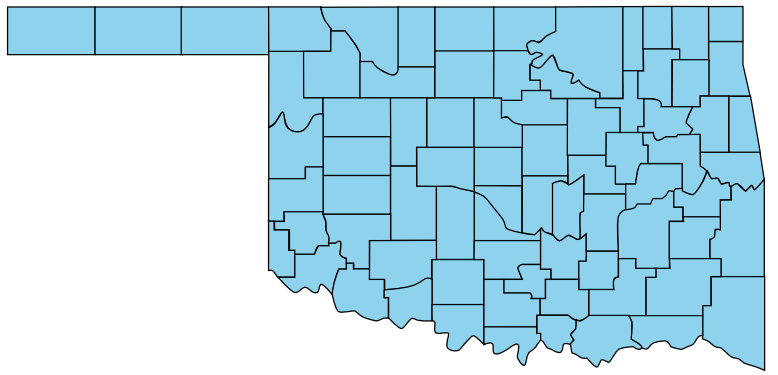 Oklahoma
Oklahoma